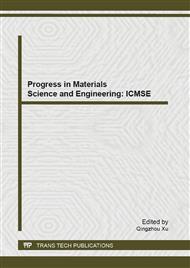p.61
p.69
p.73
p.80
p.86
p.93
p.99
p.104
p.112
Predictive Modeling of Oxide Layer Thickness in Ultrasonic-ELID Multiplicate Grinding
Abstract:
The oxide layer formed and removed on the surface of the grinding wheel has a significant influence on the grinding quality of ultrasonic-ELID multiplicate grinding. In this paper on the basis of the principles of electrochemical and ultrasonic vibration, the mechanisms of oxide layer formation and remotion were analyzed. Then, the predictive modeling of oxide layer thickness was proposed. The effects of main factors on the oxide film thickness were simulated and analyzed theoretically. The simulation results show that the layer thickness decreases with the decrease of the duty ratio or the grain volume ratio or the ultrasonic frequency ,and the increase of the electrode gap during the composite grinding process.
Info:
Periodical:
Pages:
86-92
Citation:
Online since:
October 2013
Authors:
Keywords:
Price:
Сopyright:
© 2013 Trans Tech Publications Ltd. All Rights Reserved
Share:
Citation:


